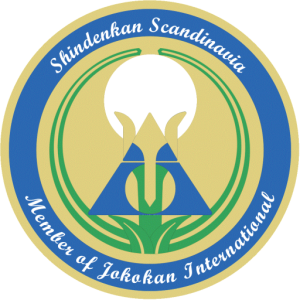By the Director team, Jokokan Honbu
As the third link in a chain, Shiatsu courses 1-3 were started on the first Saturday in February. The first two links were Tai Chi as well as ki and meditation. You can read more about these courses in other articles on the website.
Shiatsu massage is a traditional Japanese massage form which is an important part of Shindenkan's health education and an important part of the participants' insight into the workings of the human body. The Shiatsu 1-3 course is a basic course that is divided into 3 modules:
- Shiatsu module 1: General Relaxation.
- Shiatsu module 2: Introduction to alternative disease theory and massage of arms and legs.
- Shiatsu module 3: Collection of modules 1 and 2, as well as introductory median teaching.
There were 15 participants registered for this course and it was with great expectations in their eyes that everyone showed up. The instructors on the course were Kjeld Renshi-Dai and Søren Renshi-dai.
Module 1 started with an hour of theory which dealt with the history, which tools are used in a shiatsu treatment and which observations the therapist must be aware of. After that, everyone set about going through the general relaxation. Judging by the expressions of the participants, it was clear that this part of the course was something everyone had been eagerly waiting for. However, a few people realized that pain exists at different levels and that sometimes it has to hurt before it does good. But it was clear to see that everyone worked with great focus and interest in learning the craft.
In the second module, the participants gained insight into the alternative disease theory. That is how can you see an imbalance in the organs expressed in people and what can be done. What tools are available and is there a difference between treatment of new and "old" imbalances. After the theory came the practical part of the course which dealt with the massage of the arms and legs as well as the localization of some special points and their effect. For the male part, it was especially the "carpenter point" that caused cheers. However, it is not yet known whether the participants have tried the effect of the point.
In the time between modules 1 and 2, all the participants had been given the task of carrying out 5 documented treatments, which should give the participants better insight and greater experience with shiatsu as a treatment tool.
The same applied between modules 2 and 3. This time, however, 10 documented treatments were on the menu.
Module 3 is the collection and overall picture of shiatsu as a form of treatment. At the same time, it gives the participants an insight into median theory, which is essential in the alternative disease theory. On this module, the participants were also not to be cheated on a practical part. The practical part consisted of locating distal points, as well as an introduction of a tool that made most people say "nøøjjj". Especially since they had made it work themselves.
The tools in question here are called "leg extenders". It is about adjusting the length of the legs so that they come into balance and thus minimize the risk of back problems. When Søren Renshi-dai used the tool on Kjeld Renshi-dai and everyone could see the effect, there were a few who expressed that they simply thought it couldn't be right. But when they tried to use it themselves and it worked, they had to admit that it was not "magic" and a hoax, but a simple tool that worked effectively.
To pass shiatsu 1-3, after module 3, all participants had to submit a further 10 documented treatments so that the total number came up to 25 documented treatments.
The Shiatsu 1-3 instructor team would like to thank all the participants for their openness and for their ability to maintain concentration and focus during all three modules.





